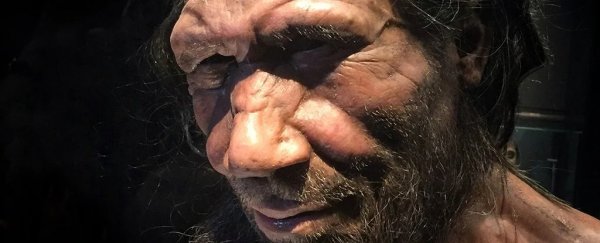Life on the blood-thinning agent warfarin involves the careful calculation of each dose. Too little, and it could be ineffective. Too much, and there is the risk of uncontrollable bleeding.
According to a recent study, those of us who share specific genes with one of our closest hominin cousins, the Neanderthal, could find this balancing act a little more challenging.
The researchers' discovery that variants in enzymes responsible for breaking down pharmaceuticals such as warfarin, ibuprofen, and cholesterol-lowering statins have such ancient origins could help explain why we don't all react to the same medications in the same way.
"This is one case where the admixture with Neanderthals has a direct impact in the clinic. Otherwise therapeutic doses can be toxic for carriers of the Neanderthal gene variant," says the study's lead researcher, evolutionary geneticist Hugo Zeberg with Sweden's Karolinska Institute.
Advances in genetic sequencing have revealed the extent to which our direct ancestors – the ones who wandered into every corner of the globe over tens of thousands of years – paused to raise families with previous groups of migrants along the way.
The legacy of genes passed down from this intermingling is yet to be fully appreciated, though year by year, researchers uncover hints in how genes that evolved in long-lost populations could contribute to differences in our own biology.
In many cases, these variations might be fairly trivial. But when it comes to the way an ancestral form of enzyme or protein channel affects our health, it could be important to know as much as we can about its evolution.
CYP2C9 is a gene that encodes the cytochrome P450, a superfamily of enzymes in the liver tasked with breaking down a wide range of medicines we commonly use to treat anything from inflammation to epilepsy.
It also happens to come in a variety of subtly different shapes, each the result of one of 20 unique takes on CYP2C9's coding.
Of course, some of these variations in structure do a better job at metabolising pharmaceuticals than others, meaning the version of CYP2C9 you inherit could determine how long your dose of medicine sticks around in your body.
In fact, one type, called CYP2C9*2, is 70 percent less active than the more common CYP2C9*1 gene variant, meaning carriers of CYP2C9*2 might metabolise some pharmaceuticals more slowly.
CYP2C9*2 seems to pop up rather frequently with other variants classed as CYP2C8*3, especially in individuals in the same families. This wouldn't be so odd, if not for the fact they happened to be separated by tens of thousands of bases of DNA.
Knowing other examples of commonly-paired gene variants spread far apart on our chromosomes have their roots in Neanderthal genomes, Zeberg and his colleagues compared the sequences taken from 146 families to see just how much they varied from similar stretches of code in genetic databases representing other modern and ancestral populations.
They found the stretch of DNA containing the two cytochrome gene variants that encode the P450 cytochrome was close enough to the Neanderthal's version that the two genes were almost certainly passed on in a mixing of our family lines tens of thousands of years ago.
The researchers note this finding might not make a big difference in how we treat individuals with medications like warfarin or statins. Specialists already keep a close eye on how we process finicky drugs, using frequent blood tests to ensure dosages are kept within reasonable limits.
Tracing the origins of variations in such important enzymes could give us a better appreciation of the environment in which they evolved, though, adding context that helps us understand the diversity of health we see today.
This research was published in The Pharmacogenomics Journal.
